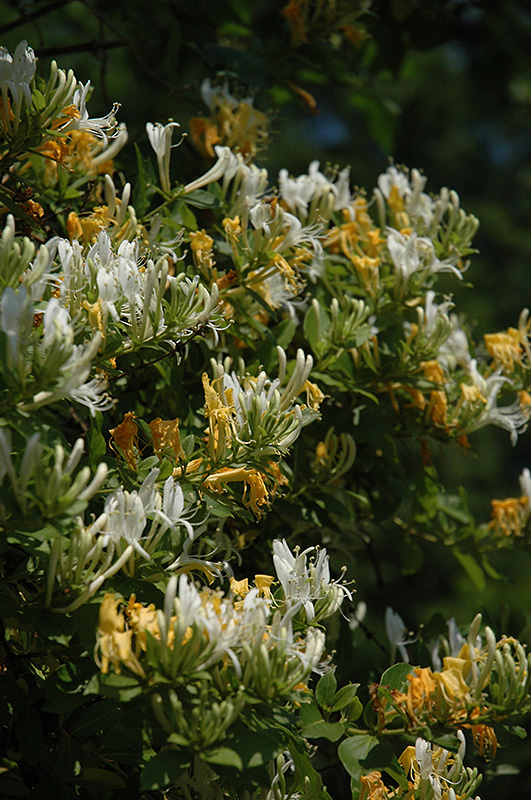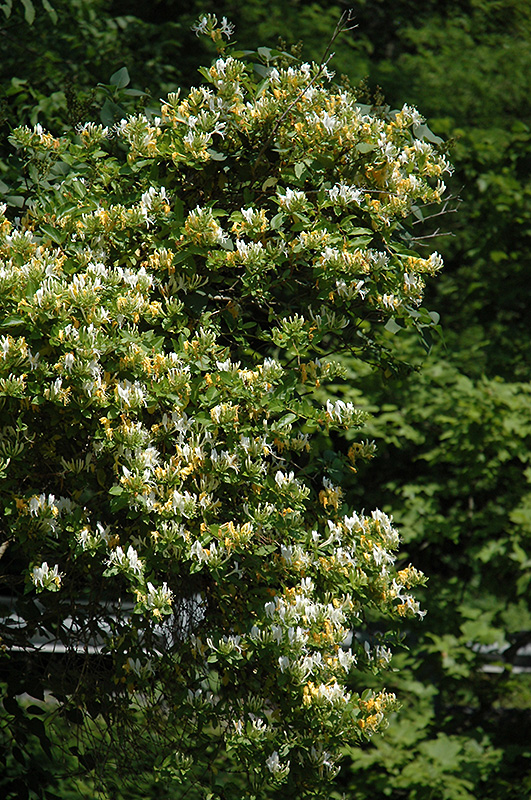PLANTFINDER
search. discover. plant.
Height: 20 feet
Spread: 3 feet
Sunlight:
![]()
Hardiness Zone: 4
Description:
A trailing and climbing vine which is highly cherished for its extremely fragrant orange-yellow flowers; ideal for a fragrant cover for a fence or wall
Ornamental Features
Yellow Honeysuckle is covered in stunning clusters of fragrant yellow trumpet-shaped flowers with orange overtones at the ends of the branches from late spring to late summer. It has dark green evergreen foliage. The oval leaves remain dark green throughout the winter. It produces black berries from late summer to late fall.
Landscape Attributes
Yellow Honeysuckle is an open multi-stemmed evergreen woody vine with a twining and trailing habit of growth. Its average texture blends into the landscape, but can be balanced by one or two finer or coarser trees or shrubs for an effective composition.
This is a high maintenance woody vine that will require regular care and upkeep, and is best pruned in late winter once the threat of extreme cold has passed. It is a good choice for attracting butterflies and hummingbirds to your yard. It has no significant negative characteristics.
Yellow Honeysuckle is recommended for the following landscape applications;
- Hedges/Screening
- General Garden Use
- Groundcover
Planting & Growing
Yellow Honeysuckle will grow to be about 20 feet tall at maturity, with a spread of 3 feet. As a climbing vine, it tends to be leggy near the base and should be underplanted with low-growing facer plants. It should be planted near a fence, trellis or other landscape structure where it can be trained to grow upwards on it, or allowed to trail off a retaining wall or slope. It grows at a fast rate, and under ideal conditions can be expected to live for approximately 25 years.
This woody vine should only be grown in full sunlight. It does best in average to evenly moist conditions, but will not tolerate standing water. It is not particular as to soil type or pH. It is highly tolerant of urban pollution and will even thrive in inner city environments. Consider applying a thick mulch around the root zone in winter to protect it in exposed locations or colder microclimates. This species is native to parts of North America.
A NetPS Plant Finder tool


